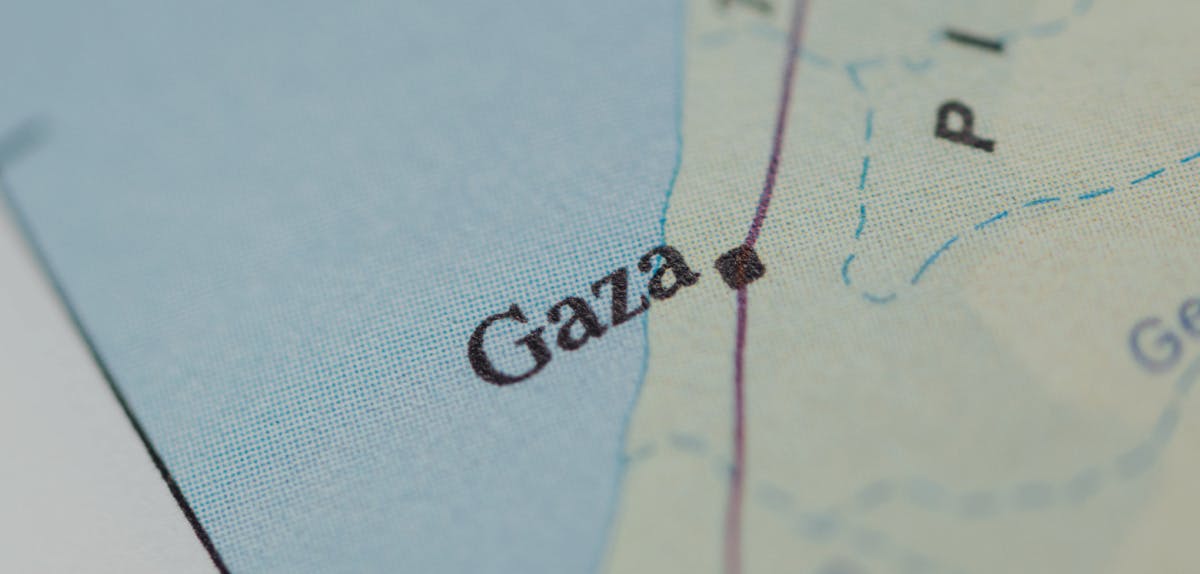Article | Distorting Israel’s Treatment of the Arabs in Gaza [and the West Bank]
October 22nd, 2023

By Rabbi Alan Silverstein, Ph.D. MERCAZ Olami, President
In routinely condemning Israel’s treatment of the Palestinians, most media have ignored the context of the administration of the “territories” since l967.
Israel has treated the "Palestinians" far better than did their Arab brethren. In l967 [under Egyptian and Jordanian rule] only l8% of the homes in the West Bank and Gaza had electricity, 44% had toilets and only 3% possessed a refrigerator or a stove.
Within 20 years of Israeli administration, these amenities became nearly universal.
Prior to l967, over half of the population had never attended school and not a single university existed.
In contrast, by the late 1980s, compulsory and free public education was provided. Israel also established Arab colleges [ultimately hotbeds of Palestinian nationalism) which serve tens of thousands of students.
We are told by many in the mainstream media that Israel is "exploiting" Gaza residents with work permits: Bringing them into pre-l967 Israel on a daily basis to fill skilled and unskilled labor slots. Yet no context is given. During the Egyptian occupation of Gaza [1948-1967], the rate of unemployment among Gaza Arabs exceeded 40%. In contrast, under Israeli rule the number rapidly dropped. Gaza's previously unemployables were redirected to agricultural and construction manual jobs. Their salaries far exceed comparable jobs inside Gaza and the West Bank, and thus support entire family networks.
Hamas’s policies have destroyed the economy of Gaza, a place where it could have been a vacation paradise and where Israelis once flocked to shop. For example, cement intended for humanitarian “rebuilding” has been diverted for weapons and terror tunnels.
When the journalists love to mention Gaza’s high population density, they fail to point out the reason
Israeli medical science literally has been a “life savor and life creator.”
Before l967, rampant malaria, polio, typhus and infant mortality held life expectancy levels to age 42. Thanks to Israel's conquest of these diseases, life expectancy rates for Gaza Arabs now exceed age 75.
Israel’s blockade of military materials and terrorists into Gaza [similar to what is done by Egypt] is accused of turning the Strip into “an open air prison.”
Yet in 2021 alone, the UN recorded 179,390 exits and 158,764 entries via the Rafah crossing between Gaza and Egypt and 90,421 exists and 87,0015 entries via the Erez crossing between Gaza and Israel.”
Thousands of Gazans enter Israel for employment, for medical treatment, etc. Gazan doctors receive additional medical training in Israel.
Constant efforts made by Israel have tried to relocate the refugees out of their sub-human camps built by the Arab League, and into standardized housing. However, residents of the camps are threatened by Hamas should they ever comply with upgrading their residential accommodations.
The Camp David Israel-Egypt-U.S.A. Accords (1979) called for "Palestinian" autonomy, with self-governance over education, health, welfare, religious and local civic affairs.
But every time initiatives acceptable to Israel were proposed, the pro-Arab majority in U.N. General Assembly dismissed the proposal. Even worse, they threatened to eliminate UNRWA welfare assistance to the refugees if they were to comply with any Israeli initiative. For Arab delegations at the UN, reducing misery in the refugee camps is to be avoided lest it lessen international pressures upon Israel.
At Oslo, Israel also has tried on several occasions to give Gazans chances at self-rule.
Yet during the next 10 years after the 1993 Oslo Accord, Hamas [based primarily in Gaza] mounted 70+ suicide bombing, murdering 483 Israelis. Nevertheless, Israeli leaders continued to hold out hope, distinguishing naively between Hamas’ military and political wings.
In 2005, Prime Minister Ariel Sharon implemented an Israeli unilateral disengagement from Gaza. President Bush and other well-intended world leaders suggested that giving Hamas territory over which it had to govern, would force terrorists into becoming statesmen. This, too, failed to materialize. No sooner had the IDF removed the residents of Gush Katif, the Palestinians “dismantled the agricultural infrastructure left behind to aid their economy. During the ensuing 6 months, 1000+ rockets and mortar shells were fired into Israel.
In 2006, at the urging of Condoleezza Rice and the US, Israel permitted elections in the territories. Israel insisted that Hamas and other terror groups disarm prior to “running for office.” Regrettably, Israel’s demand was pushed aside. In Gaza, led symbolically by Maryam Farhat [“Umm Nidal”], the proud mother of three Shahid [suicide bomber martyrs] heavily armed Hamas won a landslide victory over Fatah. Within a year, a Hamas coup overpowered Palestinian Authority forces. Gaza was now in the total control of Hamas.
During the next 15 years, Hamas’ relentless shelling of Israeli civilian areas in the bordering “Gaza envelop,” led to a series of wars with the Jewish State. Under international pressure, each time Israel agreed to a ceasefire, which merely served as an opportunity for Hamas to rearm and innovate additional forms of terror [notably terror tunnels, and now hand gliders].
Instead of Regime Change, Israel resorted to a strategy of “containment.” It was assumed that Hamas was rational and committed to improving the lives of Gaza civilians.
Haaretz noted some of the containment strategies – “The Netanyahu government has permitted a general arrangement that included labor and trade permits, gas supply and [massive amounts of] Qatari funding [$400 million annually]… Some 18,500 Gazan laborers enter Israel on a daily basis.”
Tragically, efforts “to build a life together,” again ended in disaster. “Flamer, an expert on gathering tactical intelligence from Hamas, says it’s safe to assume that such laborers from Gaza were a rich source of information on Israeli towns and the daily routine there, data that was used by Hamas in planning the October 7 operation” Haaretz, October 20].
Israelis on the Left and the Right now have come to realize that Hamas’ control of Gaza is unsustainable for Israel.
Israel has tried all types of strategies to be a good neighbor: providing medical care, universal education, giving opportunities for Gaza self-governance, and implementing a comprehensive strategy for the “containment” of Hamas’ ways of warfare. All attempts for accommodation have failed.
The urgency of Regime Change for Gaza is clear - for the well-being both of Israelis and of Gaza civilians.
Now the patience and support of the international community is required.




